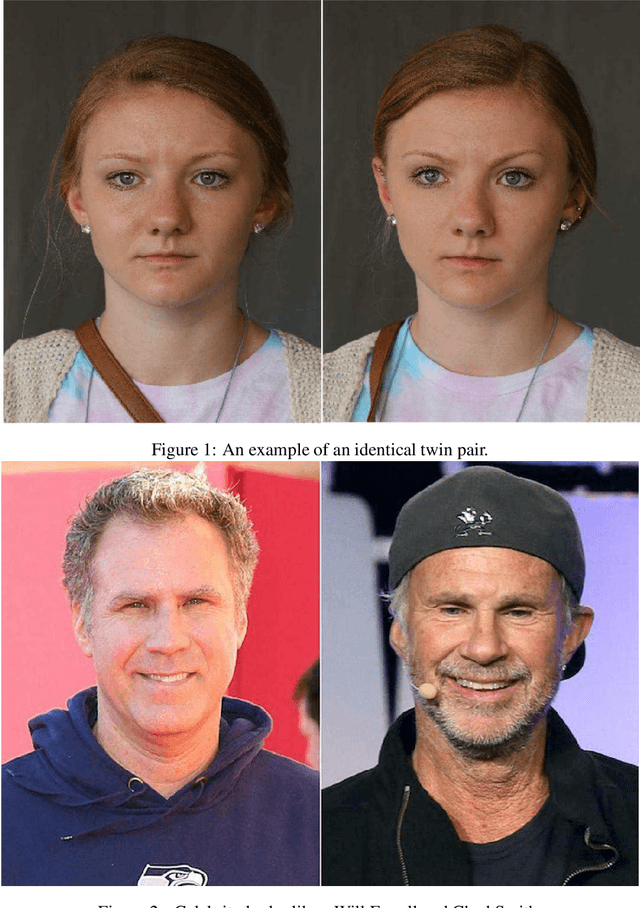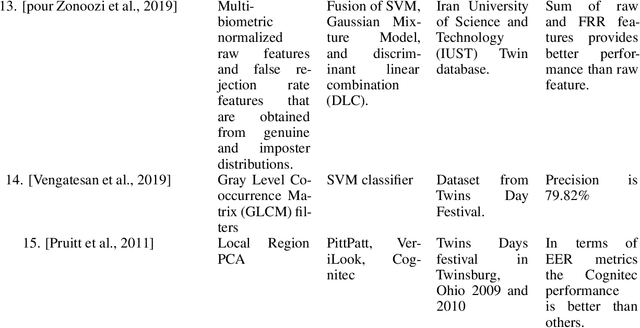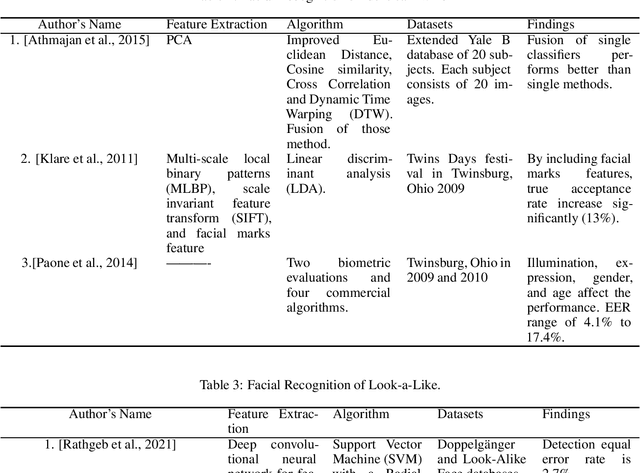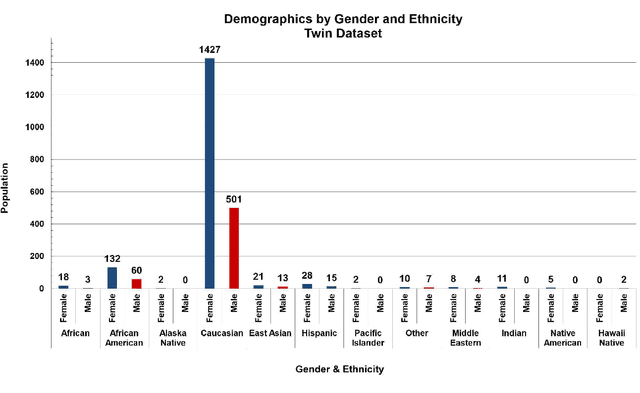Benchmarking Human Face Similarity Using Identical Twins
Paper and Code
Aug 25, 2022



The problem of distinguishing identical twins and non-twin look-alikes in automated facial recognition (FR) applications has become increasingly important with the widespread adoption of facial biometrics. Due to the high facial similarity of both identical twins and look-alikes, these face pairs represent the hardest cases presented to facial recognition tools. This work presents an application of one of the largest twin datasets compiled to date to address two FR challenges: 1) determining a baseline measure of facial similarity between identical twins and 2) applying this similarity measure to determine the impact of doppelgangers, or look-alikes, on FR performance for large face datasets. The facial similarity measure is determined via a deep convolutional neural network. This network is trained on a tailored verification task designed to encourage the network to group together highly similar face pairs in the embedding space and achieves a test AUC of 0.9799. The proposed network provides a quantitative similarity score for any two given faces and has been applied to large-scale face datasets to identify similar face pairs. An additional analysis which correlates the comparison score returned by a facial recognition tool and the similarity score returned by the proposed network has also been performed.
 Add to Chrome
Add to Chrome Add to Firefox
Add to Firefox Add to Edge
Add to Edge